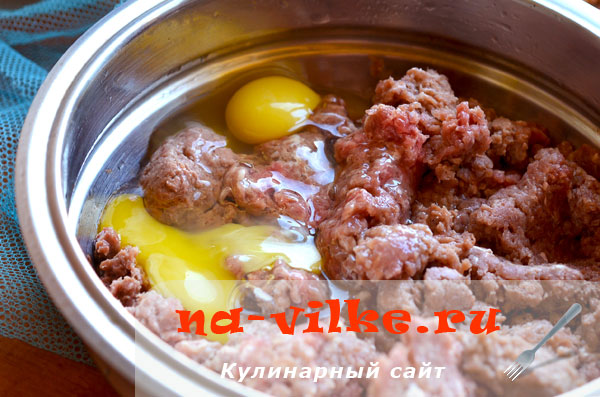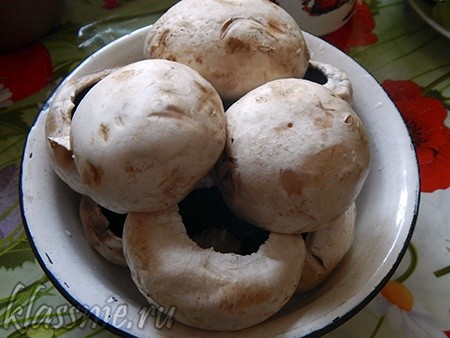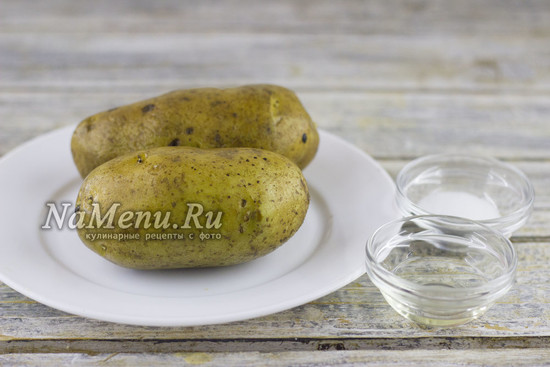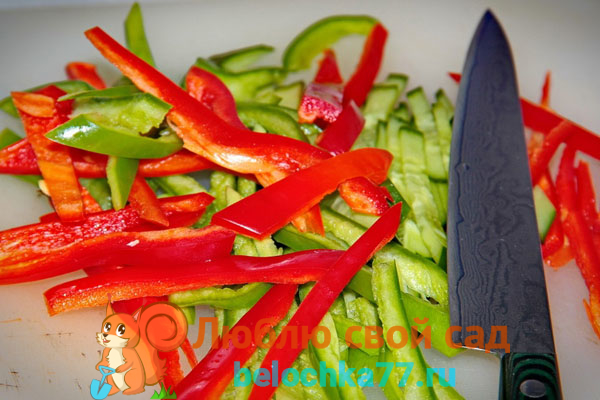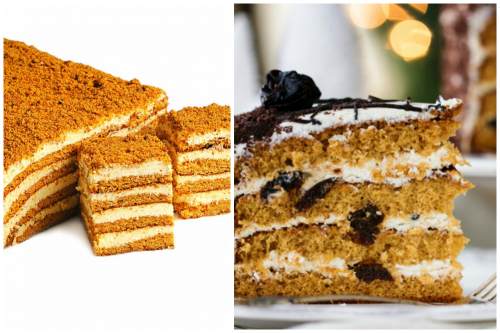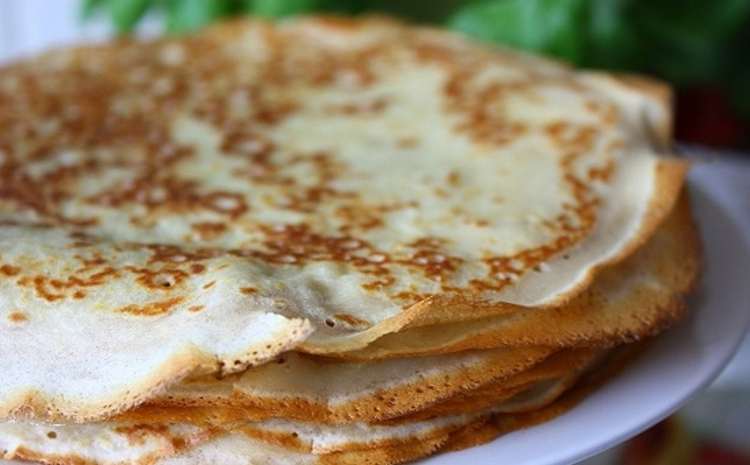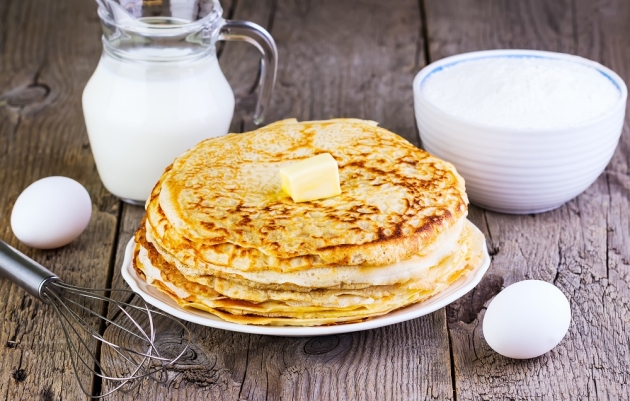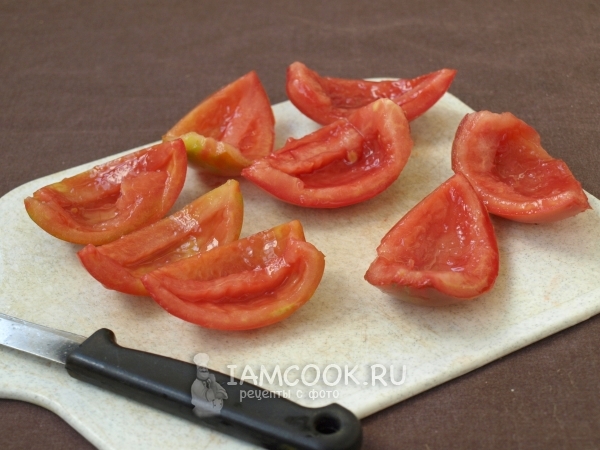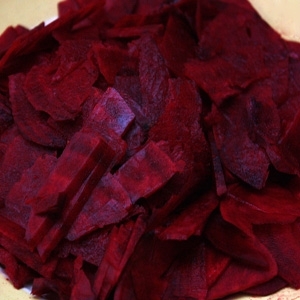What color is hibiscus tea. Hibiscus - the benefits and health benefits of hibiscus
Hibiscus is a beautiful hothouse bush or indoor flower. It is from the petals of this plant that a healthy tea called hibiscus is prepared: these are dried petals of a Sudanese rose. The rich composition of the nutrients of this plant provides a healing and healing effect. Medicinal properties have all parts of the plant. Sudanese rose contains vitamins, minerals, antioxidants, flavonoids, fruit acids, pectin - this is what determines the benefits of tea.
Plant description
Hibiscus, hibiscus, Sudanese rose - all these are the names of a beautiful flower from the family of mallow. Hibiscus has about a thousand species. The plant is thermophilic, in Russia takes root in areas with a temperate climate and mild winters. The leaves of the rose are notched, located on the petioles, the flowers are mostly bright, massive, from 5 to 30 cm in diameter, the fruit is a five-leaved box with seeds.
Sudanese rose is successfully grown in gardens and greenhouses as a variety of mallow, forming tall, flowering hedges. Favorable conditions for growth are high temperature, plenty of sun and free space. The most famous greenhouse hibiscus culture in Russia is the Chinese rose. This is an evergreen shrub up to 3 meters tall with massive flowers up to 16 cm in size.
The beneficial properties of Sudanese roses have been known since ancient Egypt. In Arab countries, hibiscus is widely used as a remedy and is called a “cure for all diseases”. This plant was used as a means to remove excess fluid from the body, accelerate the secretion of bile, to combat harmful bacteria, stop bleeding, against ulcers and wounds.

Hibiscus tea
The main way to use dried flowers is to make tea or infusion. Hibiscus tea is made from hibiscus sabdariffa, another name is rosella. Dried petals are brewed with boiling water, stand for 5-7 minutes and drink. Serve hibiscus can be hot or chilled. There are differences in the effect that tea produces depending on the serving temperature. When it’s hot, it will cheer up, slightly increase the pressure, and when cold it acts the opposite - it refreshes, gently reduces the pressure. After the drink is drunk, the remaining petals can be eaten, as they are a rich source of vitamin C, protein with essential amino acids, pectin.
When buying hibiscus, it is worth paying attention to the integrity and integrity of the flowers. Quality tea has a pronounced burgundy hue. Light or very dark flowers indicate that the tea was not stored properly or was prepared with a violation of technology.


Beverage Recipes
To prepare medicinal tea, 2 tablespoons of tea must be poured with a glass of boiling water for 10 minutes. Mix cooled, but still warm tea with a teaspoon of honey. Drink this tea several times a day for one month. The infusion has an antimicrobial and antibacterial effect.
To prepare a drink to normalize the pressure, 1 tablespoon of the petals is poured with a glass of boiling water and insisted for 5-10 minutes. To increase blood pressure, the drink should be consumed warm and cold - to reduce. The proven fact that hibiscus affects the vascular system, normalizing the contractile function of the heart.
Tea to improve appetite is prepared as follows: 2 tablespoons of hibiscus need to be steamed with boiling water, let it brew. Add a spoonful of honey to a warm infusion and drink before meals.

Useful properties of hibiscus
Vitamin C is present in more leaves and flowers of hibiscus, its use improves immunity, activates the protective functions of the body. Flavonoids affect the metabolism, accelerating it, remove toxins and decay products. The anthocyanins that make up the red color of the petals help strengthen the walls of blood vessels and improve digestion. The presence of a large number of organic acids, which give the tea a sour taste, will benefit people with a breakdown, tone up. Acids enhance metabolism in the intestines, break down excess fat, and clear blood vessels of cholesterol plaques.
Hibiscus is very healthy and has the following properties:
- is cancer prevention;
- beneficial effect on blood vessels: strengthens, increases elasticity;
- normalizes pressure;
- improves liver and kidney function;
- activates brain activity, helps improve memory;
- is an anthelmintic;
- speeds up metabolism and digestion;
- struggling with aging;
- increases libido;
- gives a refreshing effect in the heat, quenches thirst;
- boosts immunity;
- minimizes hangover symptoms;
- lowers the temperature for colds;
- gives a tone, improves mood;
- calms the nervous system;
- eliminates pain and heavy bleeding during painful periods;
- has a diuretic effect.
Contraindications
The drink has a large number of active substances, so in some cases it can cause harm.
The healing properties of hibiscus or Sudanese roses in the East have long been known. Now this unique drink is known to us as Hibiscus tea. It has a delicate floral taste with sour notes, it perfectly refreshes and invigorates. Unlike traditional tea drinks, it does not contain caffeine and can be used to treat various diseases. What is the use of hibiscus, as well as the basic secrets of brewing and consumption are discussed in our information.
Hibiscus tea composition
The unique characteristics inherent in this drink are fully explained by its composition. In folk medicine, all parts of this plant are used, but flowers (buds) and leaves are considered the most useful. They are used for the preparation of medicinal decoctions.
Chemical composition:
- Vitamins of group A, C, B and PP.
- Organic flavonoids.
- Pectin.
- Macro and trace elements (calcium, potassium, phosphorus, magnesium).
- Beta carotene.
- Natural organic acids (citric, ascorbic, linoleic, malic, tartaric).
- Captopril.
- Antioxidants.
The drink has a surprisingly low calorie content. The finished tea contains only 5 calories per 100 ml of liquid. It perfectly replenishes the supply of substances necessary for the body, so it perfectly complements any diet.
Health benefits of hibiscus tea
In eastern countries, hibiscus tea is very popular for its tonic and restorative effect. In hot weather, it will quench thirst perfectly, and in cold weather it will warm. By the way, the temperature of the drink significantly affects the effect. For example, hibiscus hot tea is able to increase blood pressure, therefore it is recommended for use in case of hypotension. A chilled drink will retain its beneficial composition, but it can lower blood pressure, which must be considered when drinking.
What properties does this tea have:
- Anti-inflammatory properties allow you to use the drink for colds. It helps to reduce the temperature, suppresses the vital activity of pathogenic bacteria strains, and also liquefies and removes sputum from the lungs (expectorant effect).
- Normalizes the digestive system. Hibiscus contains pectin, which in turn helps to normalize bowel function. In addition, it eliminates inflammatory processes in the stomach and duodenum, regulates the function of the pancreas and gall bladder.
- Hibiscus has a positive effect on the functioning of the nervous system. It helps to cope with stress, suppresses depressive states, and also improves mood.
- The adjustment of the water-electrolyte balance occurs due to the removal of excess fluid from the body. Also, the drink lowers blood cholesterol, has an antioxidant effect and helps cleanse tissues at the cellular level.
- For women, they will normalize the menstrual cycle from hibiscus, relieve discomfort during menopause, and also enhance sexual desire.
- For men, Hibiscus tea plays the role of a natural aphrodisiac. With regular use, erectile function is restored due to increased blood supply in the body and strengthening the walls of blood vessels.
- For diseases of the genitourinary system, hibiscus tea is also often used. It has a strong diuretic effect, and also eliminates inflammation in the excretory system.
- With dermatological problems: rashes, inflammatory processes on the skin, acne and acne, compresses from hard-brewed hibiscus tea are often used.
- Hibiscus decoction is useful to rinse hair after washing. It will give them shine and strength, as well as enhance the natural color of dark hair. For light curls, it is better to use less pigmented compounds, because a decoction of hibiscus can provoke darkening of the hair.
Scientifically proven the benefits of a tea drink for the prevention of cancer. Tea contains many natural antioxidants that cleanse the body of free radicals and toxins, preventing malignant transformation of cells.

Possible harm
The natural rich composition of hibiscus tea brings not only benefits, but also harm. This must be considered before starting such therapy, because with possible contraindications, you can not drink it.
In what cases is the intake contraindicated:
- Children's age up to three years.
- Individual negative reaction.
- Peptic ulcer of the stomach and duodenum.
- The increased acidity of gastric juice.
- Cholelithiasis.
- Blood pressure drops.
They use hibiscus tea with caution, even in spite of its beneficial properties, pregnant and lactating mothers. In such periods, it can negatively affect the body of a woman and a baby, lead to allergic reactions, bleeding and the risk of miscarriage. In general, the reasonable rate of consumption of this drink is two to three cups per day, so for comfortable use, do not exceed this amount.

Methods of treatment with a useful decoction
To make a healthy drink, you need to take dried petals and hibiscus leaves. Brew them in a glass or ceramic container. In the East, it is customary to use porcelain or clay dishes, the main thing is that the tea leaves do not come in contact with metal.
Important nuances and the correct algorithm are discussed in the attached video clip.
Hibiscus, hibiscus, Sudanese rose - it is under such names that this healing drink is known to us. Lon perfectly refreshes and invigorates, and also helps in the treatment of many diseases. Having found out how hibiscus is useful, you will definitely start to use it on an ongoing basis. In this case, it is necessary to take into account the possible harm to the healing drink, as well as the peculiarities of preparation to preserve the unique composition and qualities. All this is described in our information.
Hibiscus is an exotic plant belonging to shrubs. Another name for this species - hibiscus - is considered the most common and understandable for the layman. Basically, the healing properties of hibiscus have become known, due to its main application in tea ceremonies of many peoples. To date, hibiscus has received special distribution in the territory of Southeast Asia, as well as the USA and Africa. This plant loves to spread its population in areas where there is enough moisture. Despite its predisposition to floodplain meadows, the flower is considered by the inhabitants of Brazil the most beautiful and exotic in the world.
Hibiscus itself is a late-flowering culture. Its flowering is from July to October. The opened flowers are saucer-shaped. But, if the plant was not fed in time by means of fertilizers, then all this beauty may soon fall. Depending on the plant variety, the flowers take either a pinkish or purple hue with varying sharpness hue. Hibiscus grows extremely slowly, although it can reach two and a half meters in height.
But still this plant is considered somewhat capricious. He does not need direct sunlight, however, sunlight itself is extremely necessary. Hibiscus does not tolerate wind, and the soil must be well-drained. However, its reproduction process occurs very quickly with the help of layering. The plant also requires special care in terms of periodic pinching and transplanting. For example, every spring, hibiscus needs to be transplanted into a larger pot. During flowering, it is often called the "flower of love." The beauty of one inflorescence lives no more than a day. Despite such a sad fact, the plant has long been pleasing to the eye with its many flowers 3 months a year - until the frost. For winter, garden hibiscus should be transplanted closer to its indoor "brothers" in a separate pot.
Harvesting and storage of hibiscus
For medicinal purposes, a 6-day ovary is collected from hibiscus, as well as the roots of the plant. This is done for those reasons that it is in this period of development that hibiscus contains the highest concentration of nutrients. The collected ovaries, as a rule, are subsequently dried. However, in certain cases they can be frozen, boiled and preserved. When preparing diet soups, they can sometimes be served fried.
Domestic use
They make similar blanks for various purposes. For some, hibiscus is a kind of exotic seasoning for a variety of dishes, both first and second. But initially the plant was used as the main raw material for the preparation of the legendary tea called Hibiscus. Even in Egypt, hibiscus, belonging to the family of the Malvids, was considered among the pharaohs and priests a cure for almost all ailments in the world. Karkade is drunk to this day in almost any corner of the planet and with any religion.
For example, a plant is also grown in the Brazil region for decorative purposes. By the way, not only tea production is based on the Sudanese rose. It is extremely effective to get black hair dye from hibiscus. Purple colors are produced only within the food industry. This is due to the fact that the plant is still a widespread spice throughout the world. Although in some cases, hibiscus is eaten as a separate vegetable.
Composition and medicinal properties of hibiscus
- Hibiscus contains a truly valuable set of nutrients. Moreover, the action of these elements in some cases may be extremely necessary. For example, substances called anthocyanins, which are contained in large quantities in hibiscus, can not only give the tea a distinctive reddish color, but also strengthen the blood vessels of the whole body. In parallel with this, the unique composition of the plant extremely effectively cleanses the body of low density cholesterol. The cleansing process also helps to remove a variety of body fat.
- Tea from the "Chinese rose" is extremely useful for disorders of the gastrointestinal tract. Such a drink will not only help with constipation, but also additionally cleanse the body of accumulated feces.
- Flavonoids are the second distinctive group of nutrients found in hibiscus. Thanks to their activities, it is possible to get rid of accumulations of toxic substances. At the same time, various compounds from heavy metals also fall here. This suggests that the work of the liver, as well as the gall bladder in such conditions will be significantly improved.
- The antiviral effect of hibiscus is based on its high content of ascorbic acid. This allows you to raise lowered immunity, successfully activating the protective reserves of the body, able to withstand many diseases of a viral nature.
- Often, Hibiscus tea is prescribed under reduced pressure, but it should be noted: hibiscus is able to have a beneficial effect on the entire circulatory system as a whole, including the activity of the heart. As a result, in hypertensive patients and in hypotensive patients, blood pressure comes to the established norm.
- Psychologists often advise to have hibiscus at home as a houseplant. This is based on the fact that in the presence of this flower, the emotional climate in the family improves. From a more scientific point of view, hibiscus is able to purify and renew the air in the room extremely efficiently thanks to the phytoncides it contains.
- Hibiscus is best consumed through tea. It should be noted that the smell and taste of the drink are unique. In a cup with hibiscus, you can safely add a little sugar or honey. Such a drink is as versatile as possible: it can be drunk in hot weather to get rid of exhausting thirst, as well as on cold evenings in order to cheer up as quickly as possible.
Application in traditional medicine
Representatives of alternative medicine much earlier appreciated the healing properties of hibiscus than their colleagues from traditional medical science. Africans have long realized that infusions and decoctions from this plant act on the human body as an antimicrobial agent. They effectively removed inflammatory processes. Because of this property, hibiscus is also known as an effective diuretic. Very often decoctions from beautiful inflorescences of the plant helped people with various cuts and bleeding of various degrees and shapes.
Even during the reign of the pharaohs, it was known that hibiscus tea can reduce high body temperature. This is possible due to the considerable content of organic acids in the plant itself. But the main ones in solving this problem are citric and ascorbic acids. By the way, this drink can be safely added to your diet for people who have problems with the kidneys, since hibiscus is a plant that, with a rich acid content, does not contain oxalic acid.
Pharaohs drink to boost immunity
2 tablespoons of dried hibiscus flowers, pour 400 ml of boiling water over a pinch of lemon balm, mint and oregano. Insist half an hour. Strain and drink during the day.
Kombucha drink with hibiscus flowers as a restorative
When pouring Kombucha add a few petals of hibiscus. Get a great refreshing drink for your health.
Infusion of hibiscus flowers for cancer
There is an assumption in folk medicine that the "flower of love" is able to avoid and even overcome some types of cancer. Such an argument was put forward from those considerations that hibiscus preforms tend to relieve various inflammations and swelling, such as eczema, malignant ulcers and boils.
The recipe is this: take 50 grams of fresh, well-washed and dried hibiscus leaves and grind into porridge along with 25 grams of fresh flowers. Apply this porridge for 2-3 hours on the tumor, on ulcers, on eczema.
Broth as a mild laxative
Due to the laxative properties of the plant, hibiscus is often used as a medicine for weight loss. However, the effect obtained by eating the plant is most likely based on a comprehensive cleansing of the body of numerous toxins and harmful toxins. The latter, by the way, can simultaneously affect the appearance of a person for the better. Thanks to a deep cleansing of the body, the complexion improves, the aging process stops, and favorable conditions for the development of many dangerous diseases are eliminated. Brew 1 tablespoon of flowers brew in a glass of water and drink warm.
Fresh hibiscus flowers with weeping eczema
Knead a few fresh flowers and apply the pulp to the affected area for 15-20 minutes. You can also grind dried flowers into dust and sprinkle irritation on the skin with them. Wash off with warm water.
Hibiscus vs Worms
Infusion of hibiscus flowers for infectious inflammation
The plant is able to fight most bacteria, including staphylococci and Escherichia coli. However, the beneficial microflora of the intestine, and of the whole organism as a whole, remains intact. Every day, drink 1-2 glasses of hibiscus tea with a spoon of honey (add honey to tea that has already cooled down).
Hibiscus flower tea to increase appetite
Chinese traditional medicine has long used hibiscus as a means to improve the activity of the nervous system. At the same time, the use of hibiscus is also useful for older people because the substances of the plant can prevent the formation of blood clots. Decreased appetite and chronic fatigue are ailments that traditional medicine prefers to cope with with the help of an invigorating ruby-colored drink.
Fresh flowers with honey for skin diseases
Take 5 pieces of freshly picked flowers, grind into porridge with a teaspoon of honey, apply to the affected area for half an hour. Wash off with warm water.
Soothing Hibiscus Tea
For 1 tablespoon of hibiscus flowers and hop cones, brew in 300 grams of water. Insist and store in the refrigerator for up to 5 days. Drink 1 spoon in the morning and evening, and before bedtime - 2 tbsp. spoons. It helps with insomnia.
A very good way to restore the body after a serious illness, operations, to increase the immune forces
1 tbsp. a spoonful of hibiscus flowers and 1 tbsp. a spoonful of a sheet of acid (fresh, with a slide, if a dry leaf - take half a serving), knead well by hand, add 1 teaspoon of honey. Pour all this with a glass of hot (about 70 degrees) water and wrap it for half an hour. Drink strictly 1 tablespoon 3 times a day 30 minutes before meals. Children - only from 6 years on a teaspoon in the morning and evening.
Contraindications
- Herbal preparations consisting of hibiscus flowers can cause allergic reactions in individuals. In case of any deterioration in general health, you should immediately consult an allergist.
- The plant should never be used by people who have high acidity in the stomach. For gastritis and peptic ulcer diseases, it is also better to refuse hibiscus.
- In some cases, there may be an increased sensitivity or intolerance to this herbal preparation.
Today, hibiscus is better known as a houseplant or a delicious aromatic hibiscus drink that perfectly quenches thirst in the heat and invigorates. At the source of its fame, the plant was added to food not only for the sake of vivacity.The useful properties of hibiscus were still known to the ancient Egyptians, as evidenced by its traces in the tombs of Egyptian rulers.
Today, tea from it is considered the national drink of the Egyptians and is revered for its amazing ability to maintain youth, beauty and health of those who use it regularly.
After a while, Sudanese rose and tea from it gained popularity around the world. For example, Guineans use a decoction of hibiscus leaves and flowers as a sedative and astringent, Indian people add steamed petals to almost all salads, in Angola, fresh hibiscus leaves are used as an antiseptic and healing agent.
Modern Europeans are the most "advanced users" of Sudanese roses: they use it for food, as well as in the pharmaceutical industry and even cosmetology.
The chemical composition and caloric content of hibiscus
 Hibiscus leaves and flowers can be used as food and medicine, while the seeds of plants are often used to produce an extract that is actively used in official pharmaceuticals, cosmetology, and phytology. Hibiscus leaves are about 15% protein, the same amount is cellulose, contain up to 10% ash, up to 70% total carbohydrates and not more than 3.5% fat, and in addition, a significant amount of phosphorus and calcium. The composition of the fruits is somewhat different: carbohydrates prevail in it, a lot of fats and almost no protein.
Hibiscus leaves and flowers can be used as food and medicine, while the seeds of plants are often used to produce an extract that is actively used in official pharmaceuticals, cosmetology, and phytology. Hibiscus leaves are about 15% protein, the same amount is cellulose, contain up to 10% ash, up to 70% total carbohydrates and not more than 3.5% fat, and in addition, a significant amount of phosphorus and calcium. The composition of the fruits is somewhat different: carbohydrates prevail in it, a lot of fats and almost no protein.
Hibiscus fruits - high-calorie eating (approximately 353 kcal), so do not get carried away with excessive consumption of them. However, consumed in small quantities, they are able to fill our body, in addition to calcium and phosphorus, iron, as well as vitamins: thiamine, riboflavin, ascorbic acid and niacin.
Hibiscus flowers are rich in proteins, including 6 essential amino acids, organic acids (tartaric, citric, malic), as well as pectin, which activates the excretion of heavy metals and toxins from the intestines. Hibiscus flowers include flavonoids that help cleanse the liver and restore its cells, a small amount of vitamin C, which supports the immune system, as well as anthocyanins.
Useful properties of hibiscus
Properly prepared hibiscus tea in its composition contains a huge amount of various antioxidants. Thanks to this, the drink invigorates and refreshes so well, helps to get rid of the feeling of tiredness. A similar effect is also achieved thanks to hepatoprotectors, which positively affect the liver, restore its health, and also help the body get rid of various toxins, including the removal of alcohol residues. The same substances support and restore immunity, help us better resist viruses and infections.
Hibiscus is incredibly useful for people with problems with blood vessels and blood pressure. Hibiscus affects blood cholesterol, removes excess, and as for pressure, a cold drink lowers it, and hot, on the contrary, increases it. However, overdoing tea in such cases is not worth it.
Hibiscus is also useful for external use. For example, its crushed fresh flowers help get rid of ulcers, boils, burns, and crushed leaves and flowers are used by herbalists in the treatment of malignant ulcers, carbuncles.
Hibiscus contraindications
- Hibiscus has a pronounced choleretic effect, so it should be used with people with problems with the gallbladder with extreme caution.
- Limit the consumption of hibiscus tea should also be in the presence of urolithiasis.
- In addition, hibiscus can cause allergic reactions, so allergy sufferers should not consume it in large quantities.
- And, of course, hibiscus is contraindicated in babies up to a year old.
Hibiscus video (video)
The genus of hibiscus has more than fifty species, some of them are in demand decorative and industrial crops. But only one hibiscus, tea and the beneficial properties of this red with a slightly sour taste of the drink received worldwide fame.
This species of hibiscus is called Rosella or Hibiscus sabdariffa, whose plants in the wild can be found in India. By the will of fate, even in ancient times, culture was exported to the Middle East and North Africa. Here, from carmine flower cups and the resulting ovaries of hibiscus, they began to make an infusion with a beautiful red-raspberry color, a pleasant refreshing taste and a lot of useful qualities.
Today, hibiscus or hibiscus tea is industrially produced not only in India, Egypt, Sudan, where the drink has long become a tradition. Rosella plantations are cultivated in Java, in Southeast Asia, and even in South America.
Composition of hibiscus tea
 The first thing that attracts attention in hibiscus tea is a bright unusual color of the infusion.
The first thing that attracts attention in hibiscus tea is a bright unusual color of the infusion.
 Anthocyanins give this color to the drink. These are biologically active compounds used as food additives and having a positive effect on the human body. According to recent studies, these substances:
Anthocyanins give this color to the drink. These are biologically active compounds used as food additives and having a positive effect on the human body. According to recent studies, these substances:
- help strengthen the walls of blood vessels;
- counteract the accumulation and deposition of cholesterol;
- find application in the prevention and prevention of atherosclerosis, coronary disease, heart attacks and strokes.
Among the useful properties of hibiscus should be attributed to a high content of antioxidants, vitamins, organic acids, which contribute to maintaining tone and well-being.
Useful not only hot or cold infusion, but also that remains after brewing. In parts of the flower softened with hot water, a significant amount of amino acids, vegetable protein, and pectins remain.
Useful properties of hibiscus and infusion from it
Red, almost ruby \u200b\u200bhibiscus tea has antispasmodic, laxative, diuretic properties. Even in ancient times, fresh infusion was used to relieve heat, and crushed flowers were applied to festering, poorly healing wounds and bleeding.
 Today, the composition and possibilities of hibiscus have been better studied, and we can talk about the presence of Sudanese roses, as they call hibiscus, not only antipyretic and bactericidal properties, but also ability;
Today, the composition and possibilities of hibiscus have been better studied, and we can talk about the presence of Sudanese roses, as they call hibiscus, not only antipyretic and bactericidal properties, but also ability;
- resist cramps;
- relieve swelling;
- to establish the work of the digestive tract and intestines;
- cleanse the body of toxins, accumulations of gases, heavy metals and toxins;
- improve the liver and gall bladder.
The beneficial properties of hibiscus tea are in demand when there is a threat of weakening of the body after serious illnesses, intense, stress-related work. In this case, a beautiful infusion:
- effectively relieves chronic fatigue syndrome;
- improves brain performance;
- increases tone;
- activates the body's defenses.
A decoction in cold and hot form can be useful as part of the prevention of cancer, as well as in inflammatory processes in the genitourinary sphere, helminthic invasions and other serious diseases.
 Due to the ability to cleanse the body and the presence of valuable organic acids, vitamins, red tea from Sudanese rose flowers helps to recover and get rid of toxins after drinking alcohol or with food poisoning.
Due to the ability to cleanse the body and the presence of valuable organic acids, vitamins, red tea from Sudanese rose flowers helps to recover and get rid of toxins after drinking alcohol or with food poisoning.
If the future mother does not have signs of an allergic reaction, then this remedy is effective for manifestations of pregnancy toxicosis.
Contraindications for taking hibiscus tea
 Since the composition of tea is quite a lot of acids that determine its pleasant, refreshing taste, under certain circumstances not only the benefits of hibiscus are possible, but also harm. An artificial increase in the acid content in the gastric juice can lead to a deterioration in well-being with peptic ulcer or gastritis with high acidity.
Since the composition of tea is quite a lot of acids that determine its pleasant, refreshing taste, under certain circumstances not only the benefits of hibiscus are possible, but also harm. An artificial increase in the acid content in the gastric juice can lead to a deterioration in well-being with peptic ulcer or gastritis with high acidity.
There is a risk of allergic reactions, especially if a person has a predisposition to this or there is an increased sensitivity to plants or food products. Due to possible negative effects on the skin and digestive reactions, hibiscus tea should not be given to children under 1-3 years old.
Hibiscus tea brewing rules video

